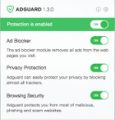What is WizardUpdate
WizardUpdate is a potentially unwanted application (PUA) that falls under the category of Adware. Adware is a type of software developed to throw advertisements up on your browser screen. Adware generates money for its author by periodically displaying unwanted advertisements and pop-up deals. You might experience a change in your home page or search engine, new tabs opening or even a redirect to shady web-pages.
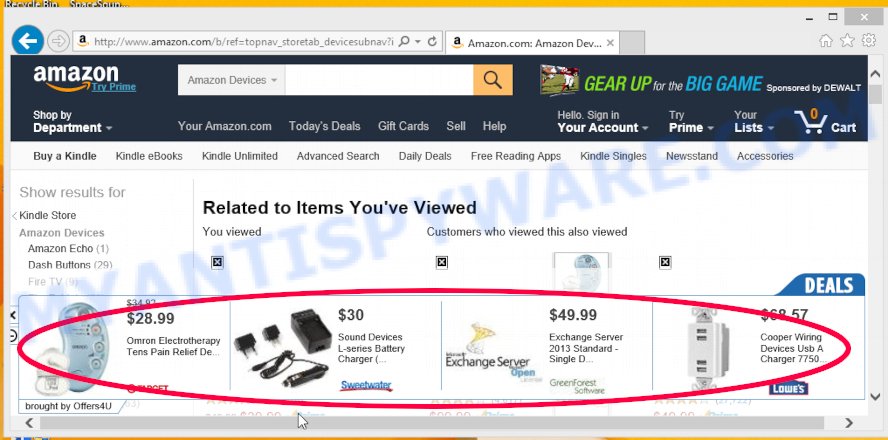
Unwanted ads
The worst is, adware may monetize its functionality by collecting sensitive information from your surfing sessions. This confidential info, subsequently, can be easily transferred third party companies. This puts your personal information at a security risk.
Thus, the WizardUpdate adware is quite dangerous. So, we suggest you remove it from your MAC system immediately. Follow the guidance presented below to remove WizardUpdate from your MAC system and Mozilla Firefox, Google Chrome and Safari.
How does WizardUpdate get on your computer
Adware software commonly comes on the MAC OS with free applications. In many cases, it comes without the user’s knowledge. Therefore, many users aren’t even aware that their MAC system has been infected with PUPs and adware. Please follow the easy rules in order to protect your MAC system from adware and potentially unwanted software: don’t install any suspicious programs, read the user agreement and choose only the Custom, Manual or Advanced installation option, don’t rush to click the Next button. Also, always try to find a review of the application on the Net. Be careful and attentive!
Threat Summary
| Name | WizardUpdate, WizardUpdate 1.0 app |
| Type | adware, PUP (potentially unwanted program), pop ups, popup virus, popup advertisements |
| Symptoms |
|
| Removal | WizardUpdate removal guide |
How to remove WizardUpdate adware
We can help you remove WizardUpdate from your browsers, without the need to take your MAC OS to a professional. Simply follow the removal guide below if you currently have the intrusive adware software on your machine and want to remove it. If you’ve any difficulty while trying to get rid of the adware, feel free to ask for our assist in the comment section below. Some of the steps will require you to reboot your machine or close this web-site. So, read this guide carefully, then bookmark this page or open it on your smartphone for later reference.
To remove WizardUpdate, use the following steps:
- Remove profiles created by WizardUpdate
- Delete WizardUpdate related programs through the Finder
- Remove WizardUpdate related files and folders
- Scan your Mac with MalwareBytes
- Remove WizardUpdate from Safari, Chrome, Firefox
- How to stay safe online
- Finish words
Remove profiles created by WizardUpdate
WizardUpdate can make changes to the Mac system such as malicious changes to browser settings, and the addition of malicious system profiles. You need to check the system preferences, find and remove malicious profiles and ensure your settings are as you expect.
Click Apple menu ( ![]() ) > System Preferences.
) > System Preferences.
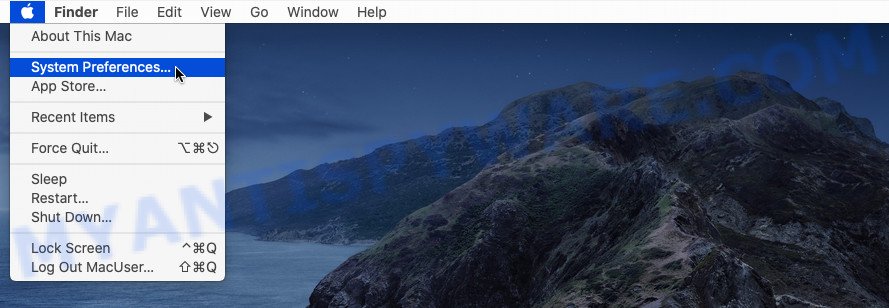
In System Preferences, select Profiles. if there is no Profiles in the list of preferences, that means there are no profiles installed on the Mac device. If there is Profiles in the list, then click on it, then select a profile related to WizardUpdate.
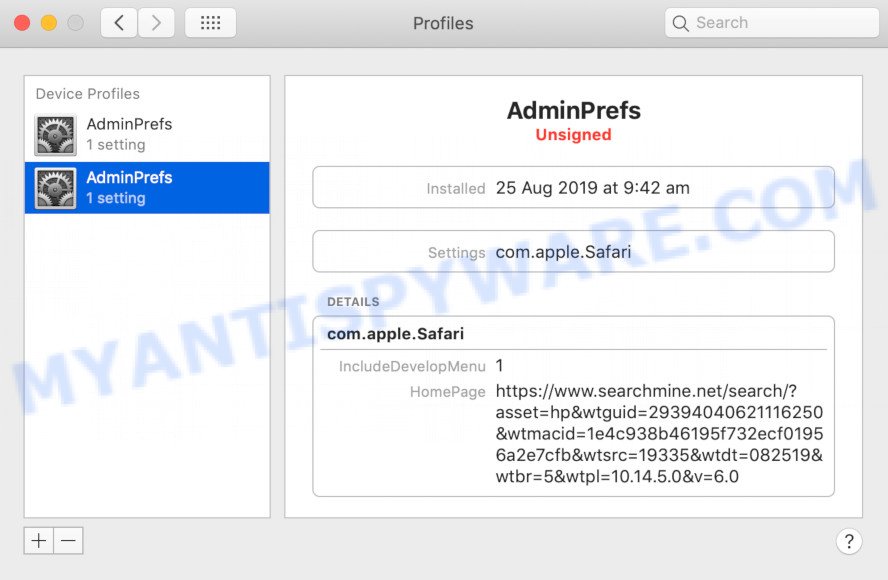
To delete a malicious profile, click on the minus button ( – ) located at the bottom-left of the Profiles screen.
Delete WizardUpdate related programs through the Finder
Some of adware, PUPs and browser hijackers can be removed using the Move to Trash tool which is located in the Finder. So, if you are running any version of Apple Mac and you have noticed an unwanted program, then first try to remove it through the Finder.
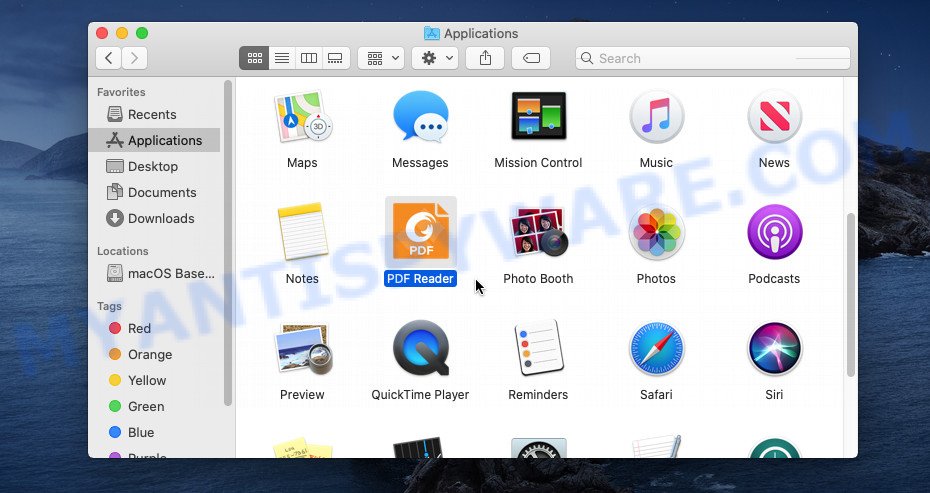
- Open the Finder.
- Click “Applications”.
- It will open a list of all programs installed on the computer.
- Scroll through the all list, and delete dubious and unknown apps. Pay maximum attention to the program you installed last.
- Drag the questionable program from the Applications folder to the Trash.
- Empty Trash.
Remove WizardUpdate related files and folders
Now you need to try to find WizardUpdate related files and folders, and then delete them manually. You need to look for these files in certain directories. To quickly open them, we recommend using the “Go to Folder…” command.
Click on the Finder icon. From the menu bar, select Go and click “Go to Folder…”. As a result, a small window opens that allows you to quickly open a specific directory.

Check for WizardUpdate generated files in the /Library/LaunchAgents folder

In the “Go to Folder…” window, type the following text and press Go:
/Library/LaunchAgents
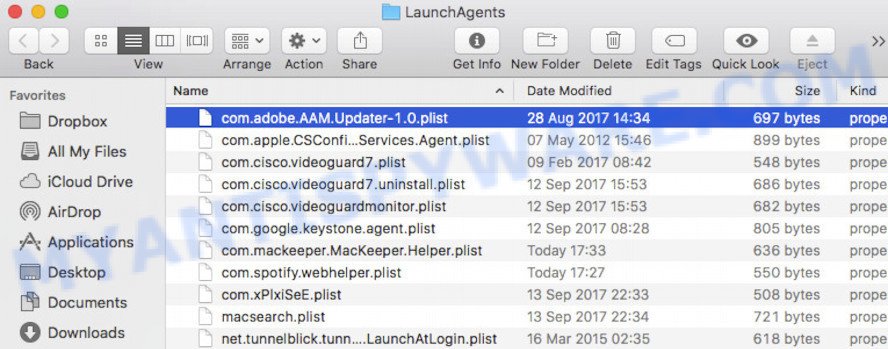
This will open the contents of the “/Library/LaunchAgents” folder. Look carefully at it and pay special attention to recently created files, as well as files that have a suspicious name. Move all suspicious files to the Trash. A few examples of files: WizardUpdate.plist, macsearch.plist, installapp.plist, search.plist and com.machelper.plist. Most often, adware software, PUPs and browser hijackers create several files with similar names.
Check for WizardUpdate generated files in the /Library/Application Support folder

In the “Go to Folder…” window, type the following text and press Go:
/Library/Application Support
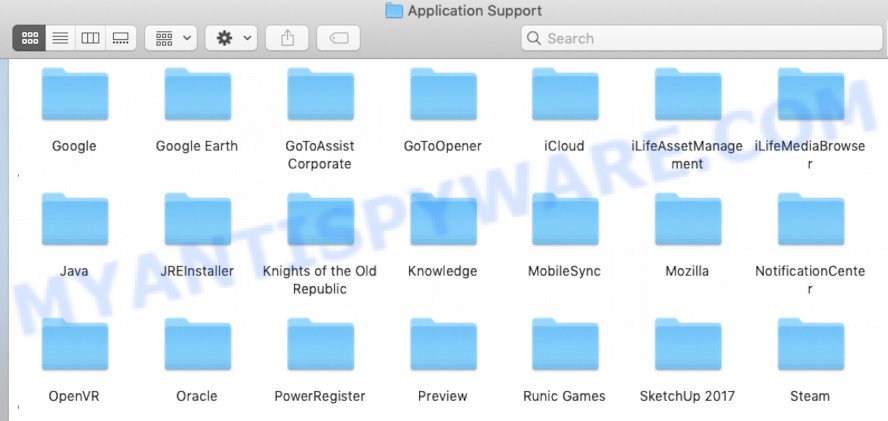
This will open the contents of the “Application Support” folder. Look carefully at its contents, pay special attention to recently added/changed folder. Move all suspicious folders to the Trash.
Check for WizardUpdate generated files in the “~/Library/LaunchAgents” folder

In the “Go to Folder…” window, type the following text and press Go:
~/Library/LaunchAgents

Proceed in the same way as with the “/Library/LaunchAgents” and “/Library/Application Support” folders. Look for suspicious and recently added files. Move all suspicious files to the Trash.
Check for WizardUpdate generated files in the /Library/LaunchDaemons folder
In the “Go to Folder…” window, type the following text and press Go:
/Library/LaunchDaemons

Carefully browse the entire list of files and pay special attention to recently created files, as well as files that have a suspicious name. Move all suspicious files to the Trash. A few examples of files to be deleted: com.machelper.plist, com.WizardUpdate.plist, com.macsearch.plist, com.search.plist and com.installapp.plist. In most cases, PUPs, browser hijackers and adware create several files with similar names.
Scan your Mac with MalwareBytes
Manual WizardUpdate removal requires some computer skills. Some files and system entries that created by the adware may be not completely removed. We recommend that run MalwareBytes AntiMalware (MBAM) to scan the Mac. Moreover, this program will help you to remove browser hijackers, potentially unwanted programs, toolbars and adware that your machine can be affected too.
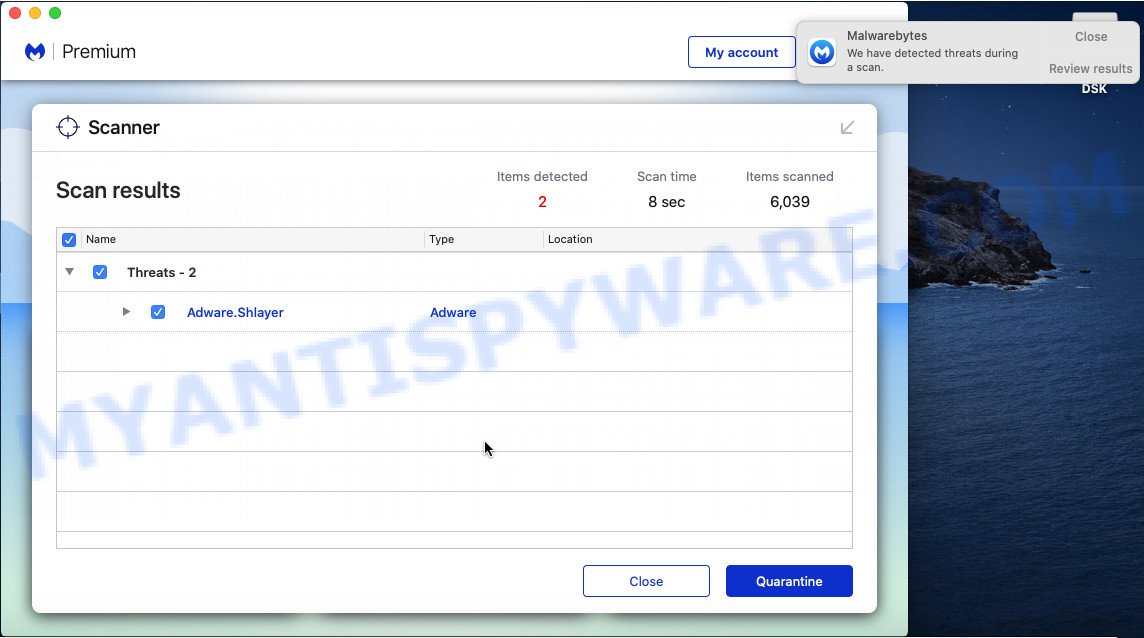
- MalwareBytes can be downloaded from the following link.
Malwarebytes Anti-malware (Mac)
21018 downloads
Author: Malwarebytes
Category: Security tools
Update: September 10, 2020
- After the downloading process is done, please close all apps and open windows on your MAC. Run the downloaded file. Follow the prompts.
- The MalwareBytes Free will open and show the main window.
- Further, click the “Scan” button to begin scanning your MAC OS for the WizardUpdate adware software. When a malicious software, adware software or potentially unwanted software are detected, the number of the security threats will change accordingly.
- When MalwareBytes Free has completed scanning, a list of all threats found is created.
- In order to remove all items, simply click the “Remove Selected Items” button.
- Close the Anti-Malware and continue with the next step.
Remove WizardUpdate from Safari, Chrome, Firefox
If you are still seeing WizardUpdate adware that won’t go away, you might have malicious plugins installed on your web browser. Check your web-browser for unwanted extensions using the steps below.
You can also try to remove WizardUpdate by reset Google Chrome settings. |
If you are still experiencing problems with WizardUpdate adware software removal, you need to reset Mozilla Firefox browser. |
|
How to stay safe online
To put it simply, you need to use an adblocker tool (AdGuard, for example). It will block and protect you from harmful websites, unwanted ads and pop-ups. To be able to do that, the ad-blocking application uses a list of filters. Each filter is a rule that describes a malicious web-site, an advertising content, a banner and others. The adblocker program automatically uses these filters, depending on the web-pages you’re visiting.
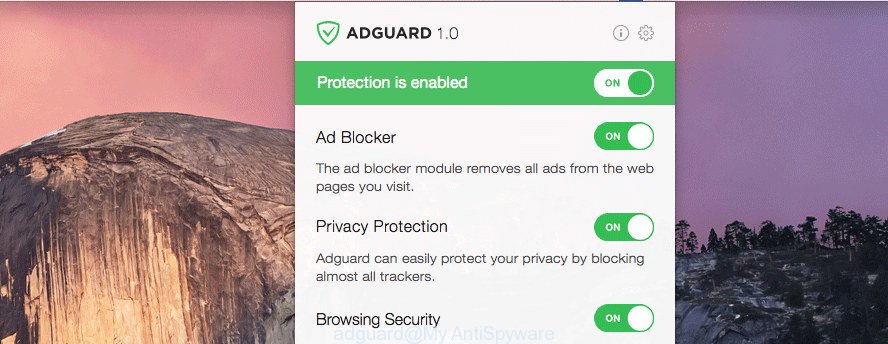
Click the link below to download the latest version of AdGuard for Apple Mac.
3779 downloads
Author: © Adguard
Category: Security tools
Update: January 17, 2018
After the download is done, run the downloaded file. You will see the “Setup Wizard” screen. Follow the prompts.
Each time, when you run your MAC, AdGuard will launch automatically and stop intrusive pop ups, block malicious and misleading web-sites.
Finish words
Now your MAC OS should be clean of the WizardUpdate adware. We suggest that you keep MalwareBytes AntiMalware (MBAM) (to periodically scan your Apple Mac for new adwares and other malware) and AdGuard (to help you stop annoying pop up ads and malicious web pages). Moreover, to prevent any adware, please stay clear of unknown and third party applications.
If you need more help with WizardUpdate related issues, go to here.

